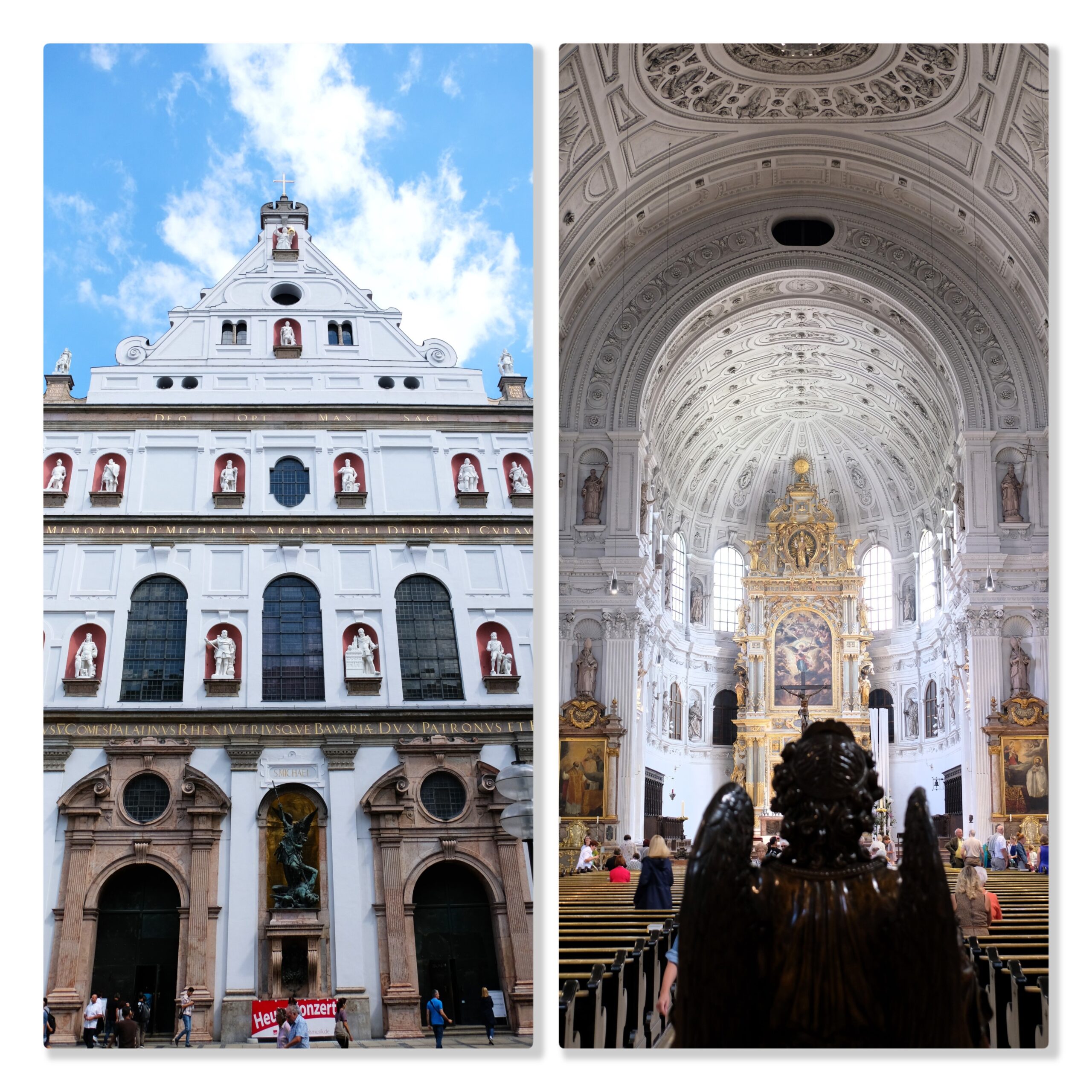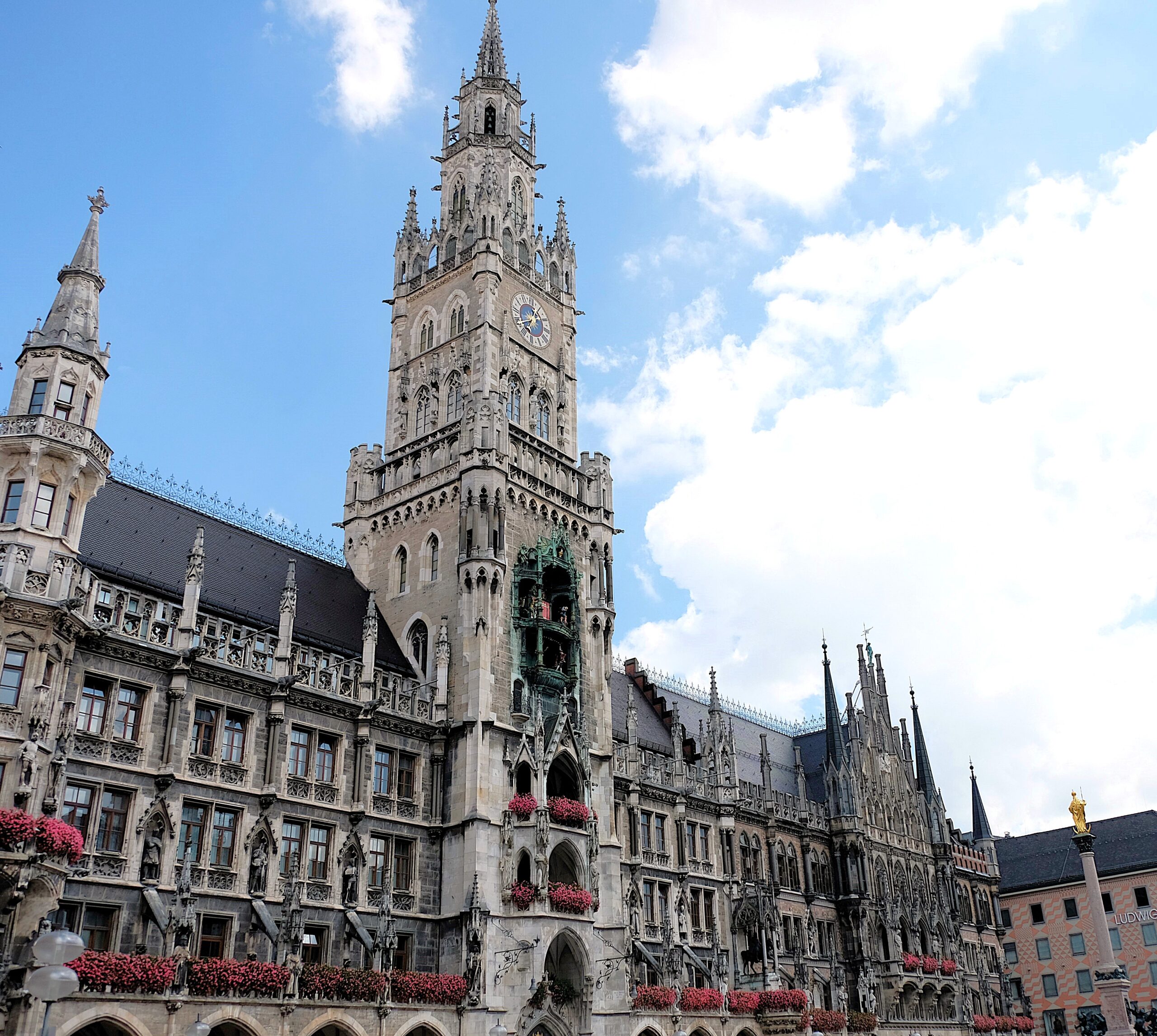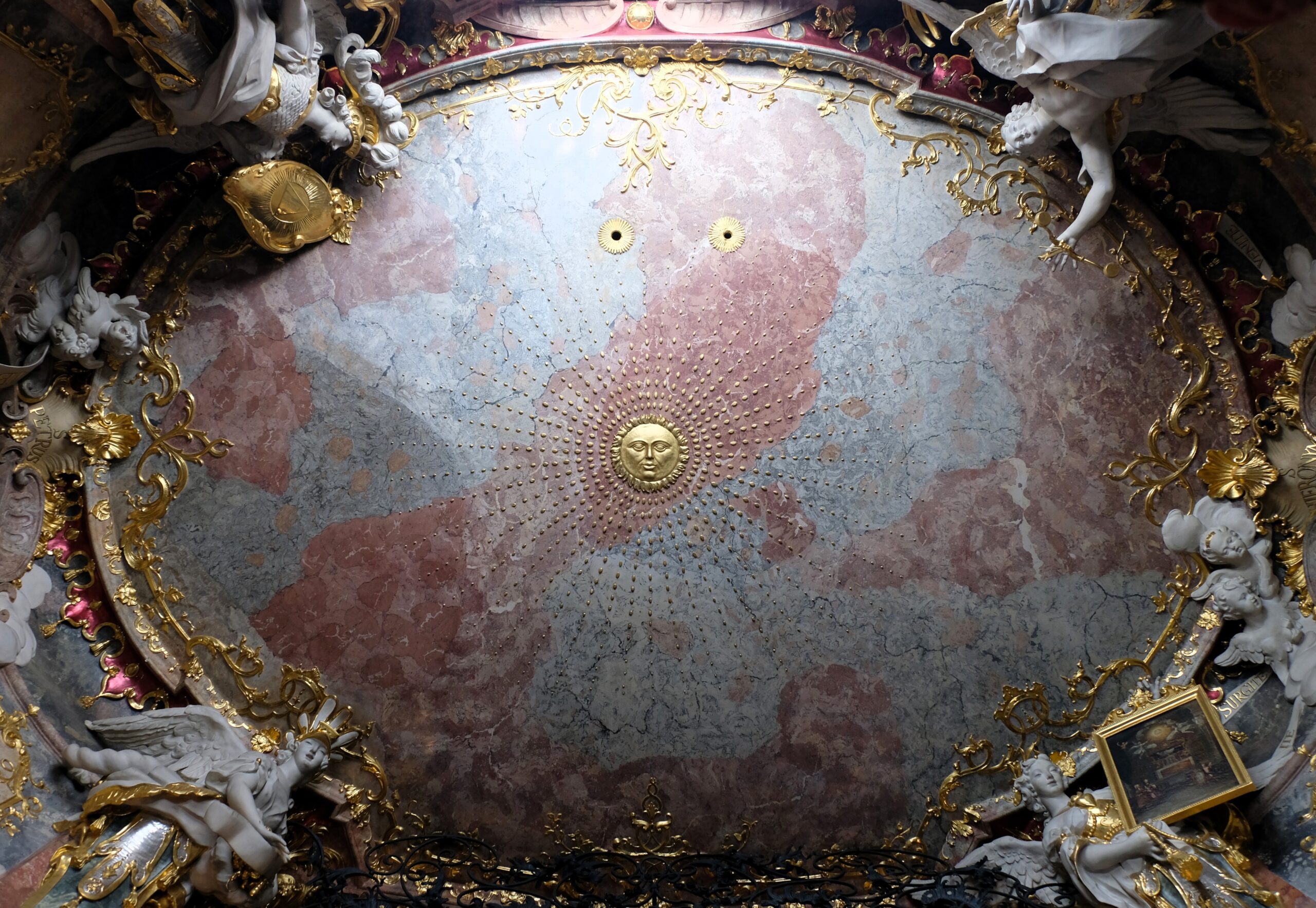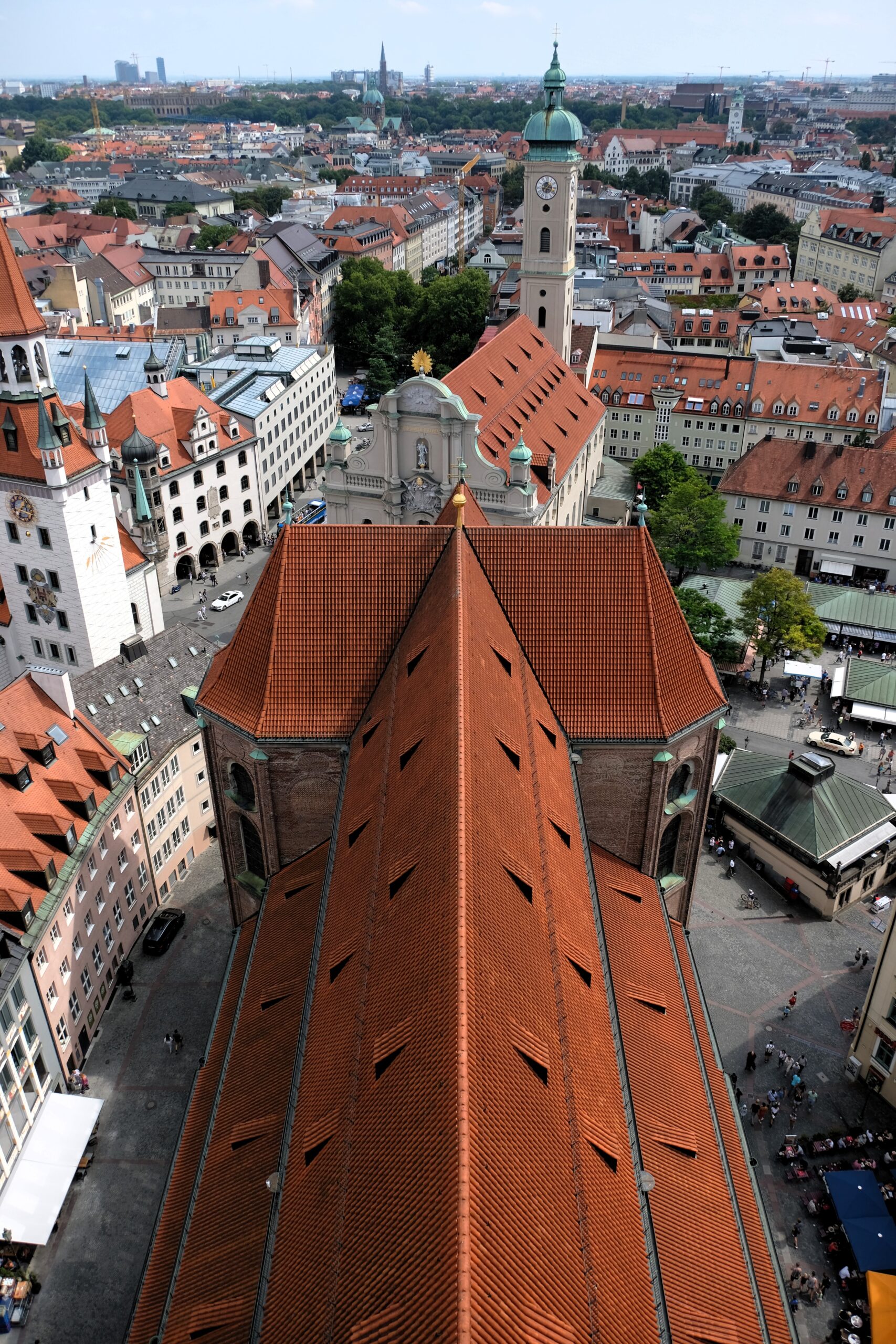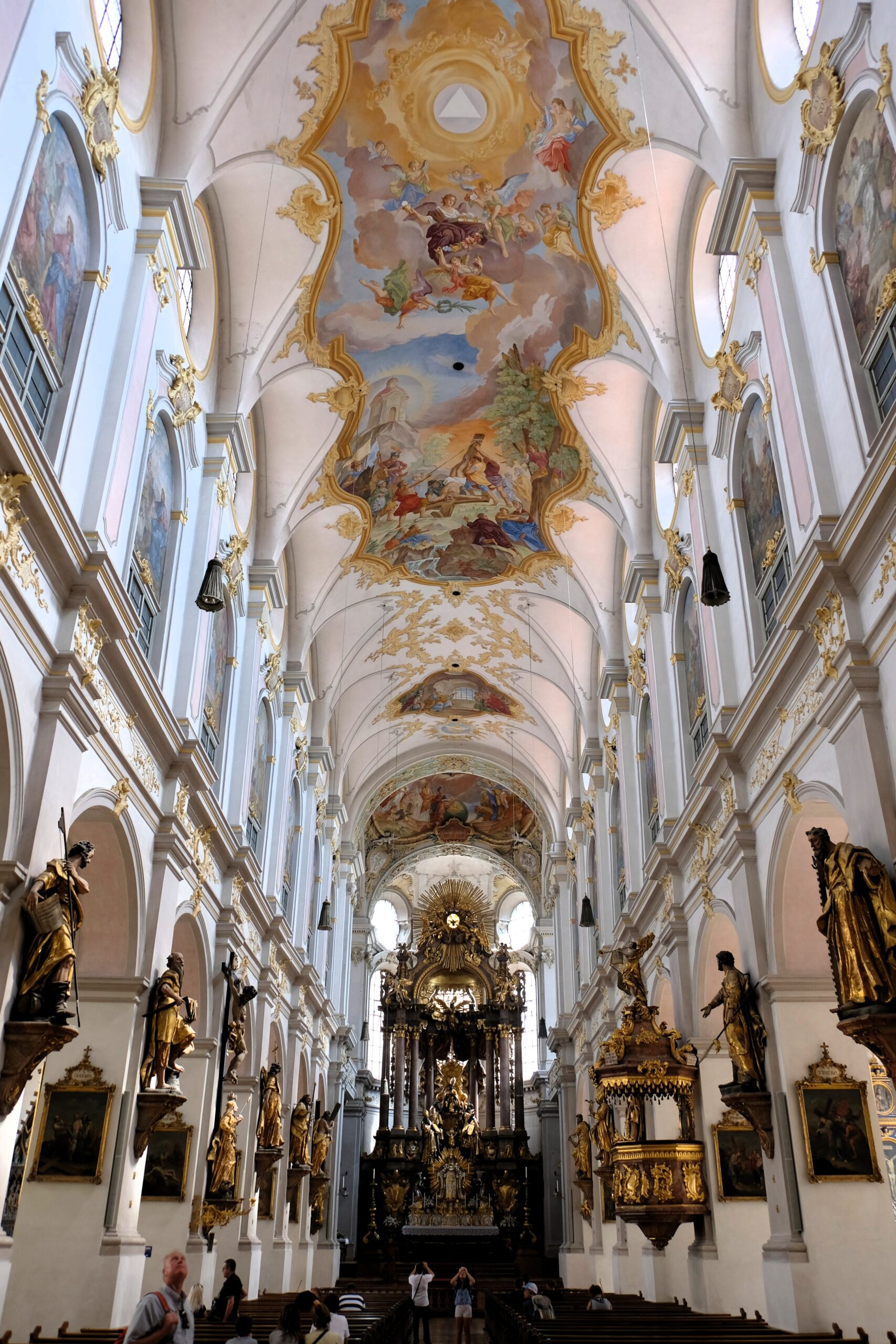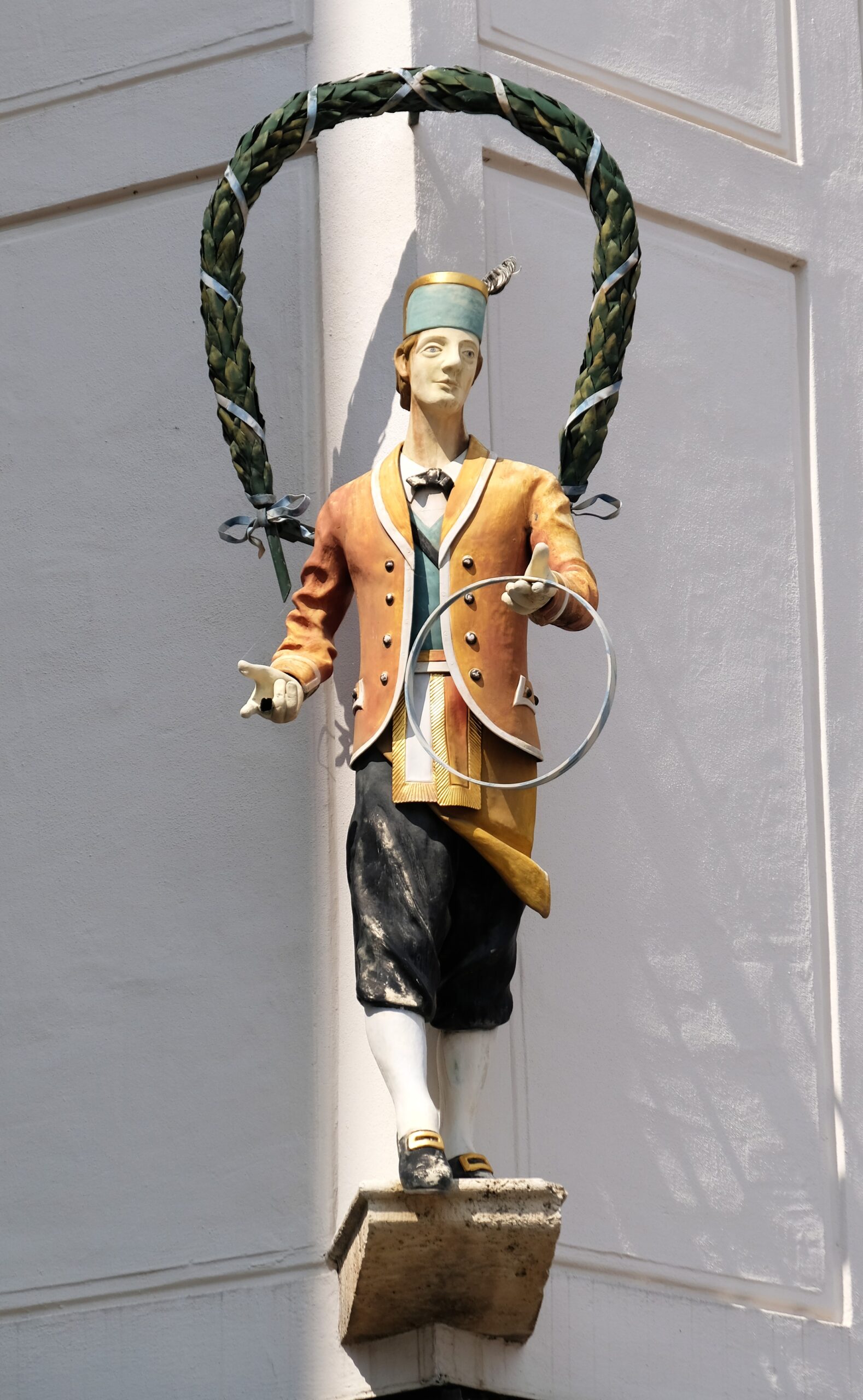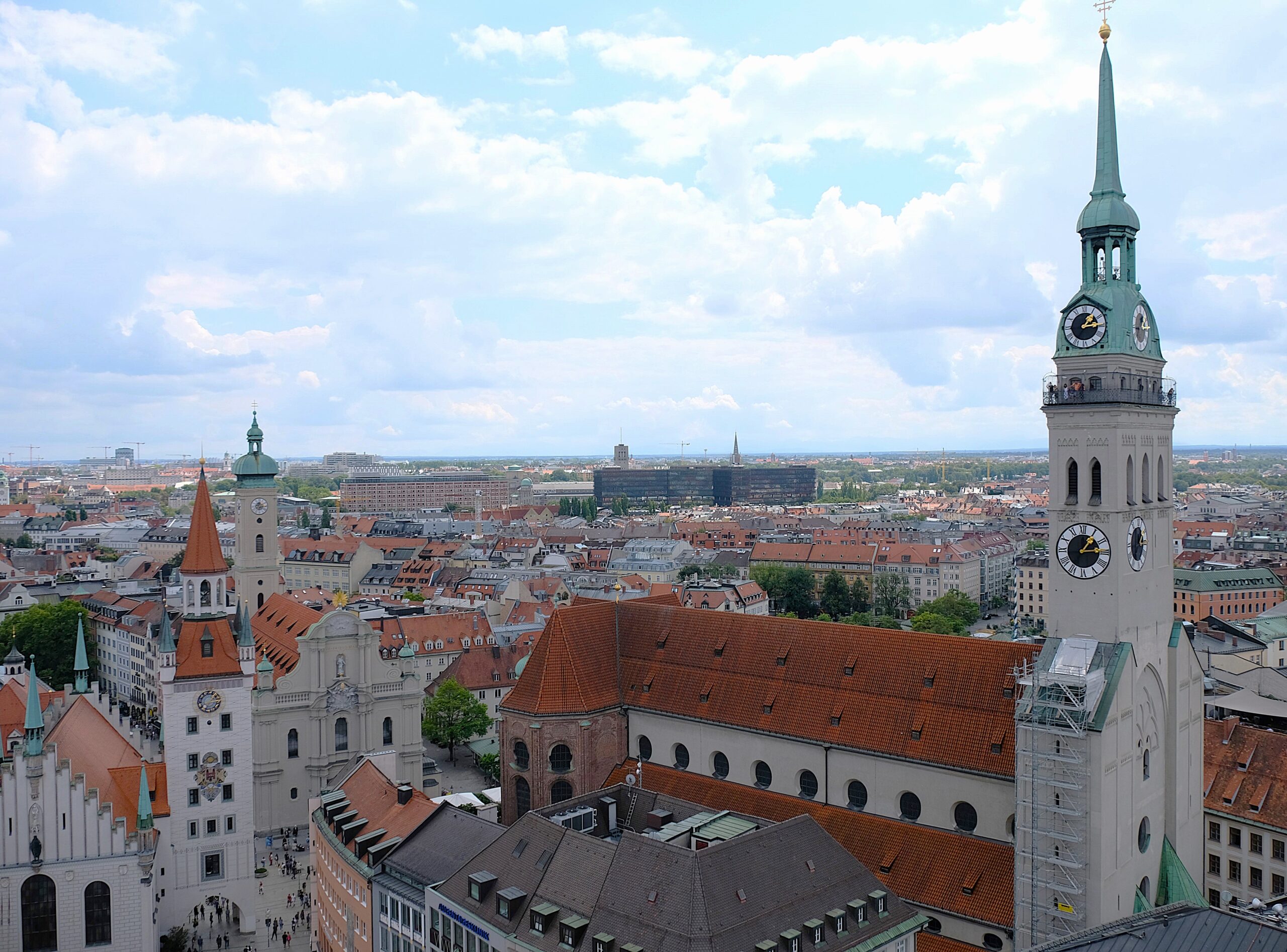Munich / München was next on my destination list. I regret not spending more time in Germany other than my six days in Munich. It’s a big country with so much to see and offer. It deserves more time. More reason to return…always wanted to go to Berlin. Looking back, this time-constraint was self-imposed, hence the regret. The decision to go to Munich was because it is so close to Zurich, easy and cheap to get there too. With only my transport there and accommodation booked, nothing else was planned; what to do and see.
Zurich to Munich / München by bus
I tend to avoid long-haul buses. Though this trip was just shy of 4-hours. Previous bus trips have been eventful and mostly uncomfortable experiences: Cusco to Santa Maria (on route to Machu Picchu), La Paz to Sucre spring to mind (eventful and memorable, yes…not really enjoyable 😊)! As you would expect of the Swiss and the Germans, this bus trip went smoothly. With two seats to myself and stunning scenery there was nothing to complain about.
Deutsche Bahn IC bus:
- Leaves from Zurich Central station (next to Zurich train station)
- Arrives at Munich hbf (Central Station Munich)
- Journey is 3hrs 50min
- I paid under 30 EURO
Taking no photos along the route. My head pressed against the window as I watched the scenery pass me by. Enjoying the moment of ever changing scenic views, the gentle rocking of the bus and occasionally nodding off. One thing which was unmistakable to miss, was crossing the border into Italy. From perfect roads, to crisply maintained pavements of the Swiss. Visually, Italy was less kept. This wasn’t a perception, you couldn’t help noticing the difference. Even some of the most beautiful areas of Italy, like Lake Como, don’t live up to the standards of Switzerland.
Accommodation
During my travels I’ve been hit or miss when it comes to accommodation. Some places weren’t great, others excellent. I never stayed in fancy places. On a travel marathon, my excellent means; clean, good location, safe and price, with a prerequisite of having my own bathroom.
- Finding cheap places is easy, though this is often compromised by location. By and large everywhere (almost) was clean.
- Safe, hasn’t been a problem. Only place where this was an issue was in Giza. It wasn’t unsafe, you were just hounded by locals for money – I never felt unsafe. In Aswan, my first accommodation had a dodgy staff member, I checked out after a few hours.
- Location is mostly where it has been hit or miss. La Paz (Hotel Sagarnaga) was a great location and price. My first accommodation in Lima, was out of the way and put a dampener on my arrival. After moving to (Hotel Las Palmas, Miraflores) it changed everything for the better. Similar to my accommodation in Bogota, it was too far from everywhere and I didn’t have the energy or motivation to move closer to La Candelaria.
I booked for 4 nights (extended later for an additional 3) at Augusten Hotel, arriving on the 14th August, a day after my birthday. As usual the hotel wasn’t flash; nice and clean. Good location, only 1km from Karlplatz, except the area couldn’t look or feel less German.
Munich / München
…a heads-up, my posts of Munich / München may be quite long; there’s a lot to see in the city and loads of history too! With so much in close proximity I’ll have to jumble up my pictures i.e. picture taken on day one, I’ll write about on day three or four. Throughout my visit quite a few places were closed, so I have lots of exterior pictures, unfortunately not as many inside. My lack of planning didn’t help.
Facts and history
Munich / München is the 3rd largest city in Germany with circa. 6 million people, located on the river Isar north of the Alps. It hold the seat of the Upper Bavaria. Settlement in the area dates back to when there was a small community of friars in the 8th century called zu den Munichen (to the Monks); old High German Muniche is the basis of modern German München.
From 1180 till the revolution in 1918, the city and Bavaria region was ruled by the House of Wittelsbach. From the 1920’s there was political instability, eventually leading to the rise and ruling of the Nazi party; Munich was declared their “Capital of the Movement”. Heavily bombed during World War II destroying many historical buildings which were subsequently rebuild after the war. Another unfortunate event following the war was the hosting of the 1972 Summer Olympics…with the subsequent Munich Massacre. I visit the Olympic Village during my time in the city.
Karlsplatz and Karlstor
Walking from my hotel, Augusten Hotel to Marienplatz which I did many times, I took the route going through Karlplatz. From there, going through Karlstor; the gateway to the Marienplatz. Karlstor, locally known as Stachus, is the old Medieval gate into the old city. This entrance was part of the city’s fortification and checkpoint. These days it looks more like an ad hoc addition to create a sense of grandiose. Wedged between two commercial buildings, it looks like a Disney addition to the historic centre of the city. Prior 1791 is used to be called Neuhauser Tor.
Munich’s fortification walls date back to 1285. These walls were extended and a second ring of walls were created between 1285 and 1347. Sometime between these years Neuhauser Tor was built; named after the next town to be reached when leaving from the gate. Neuhauser Tor’s name change came about in 1791 following modifications to the fortifications by Count Rumford (commander of the Bavarian army under Charles Theodore, Elector of Bavaria). It’s new name Karlstor was in honour of Elector, Charles.
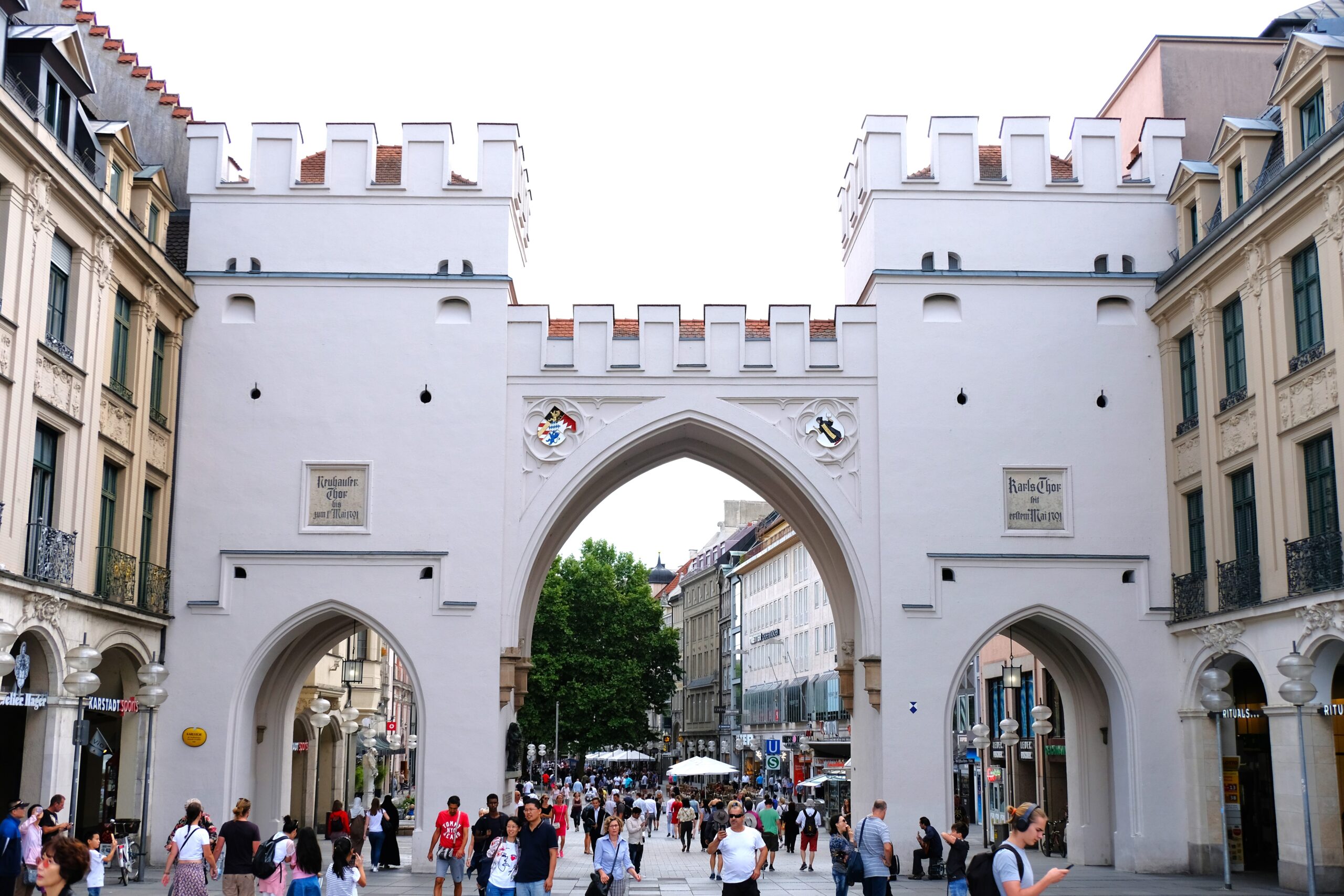
Marienplatz / Mary’s Square
Here is the centre of historic Munich. The tourist hub, something like Leicester Square in London, except for the bright lights and cheap tourist trinket stores. Its been the epicentre of the city since 1158. Marienplatz St Mary, Our Lady’s Square used to be the main market square; aptly name Markth (Market), Schraane (grain market), then Schrannenplatz (grain market square) this was moved in 1853, and in 1854 was called Marienplatz.
You might be asking why it is called Marienplatz? The name comes from Mariensaule, a Marian column, which was erected in 1638 as a celebration to the end of Swedish occupation. From here you walk to most of “main” tourist sites within a few minutes. It somewhat reminded me of Florence, Italy (I visit not long after my time in Munich). I’m splitting Marienplatz and surrounding sites into two posts. Too many pictures for one.
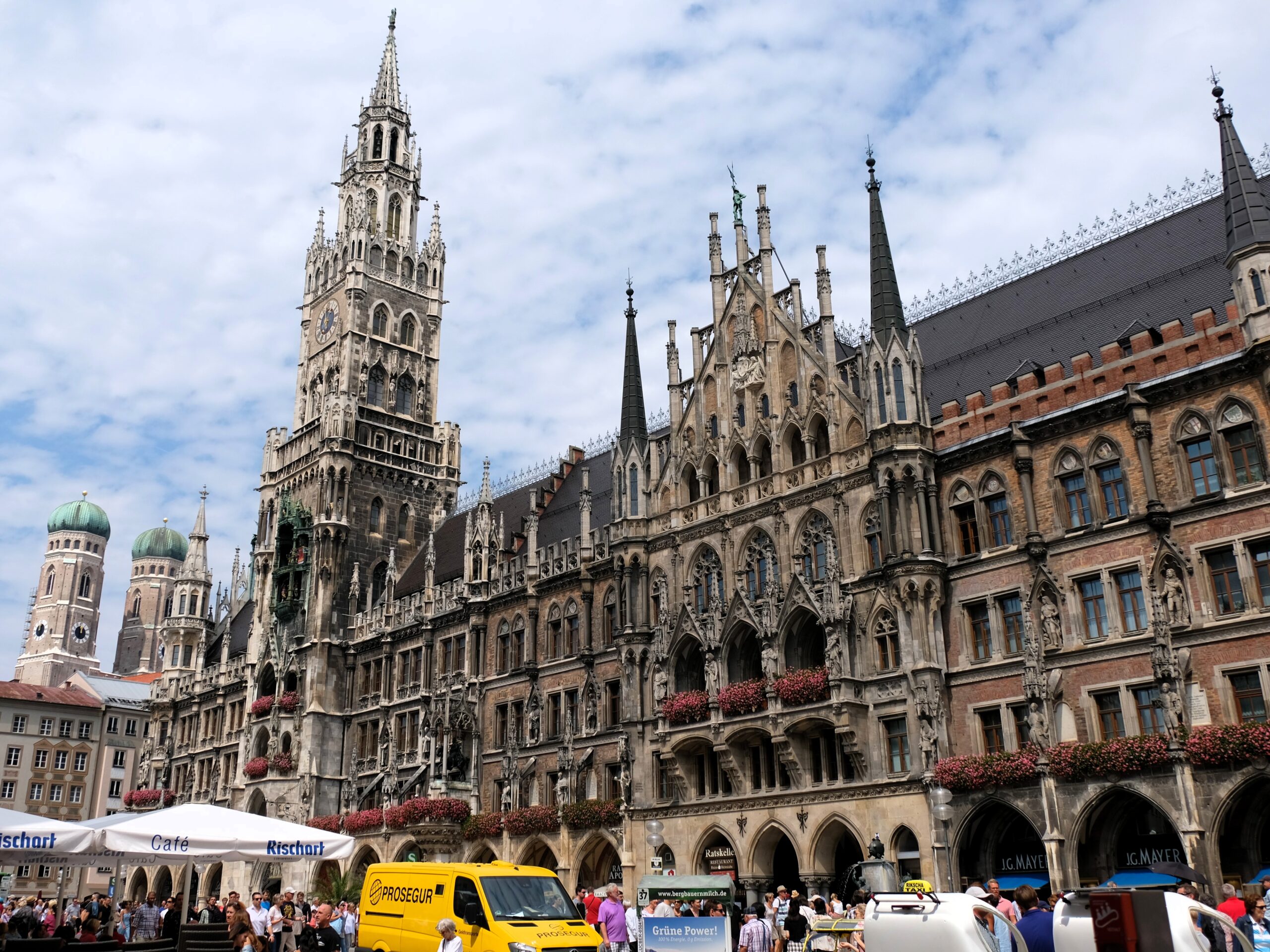
Neues Rathaus – New Town Hall
The Neues Rathaus (New City Hall) vs. Altes Rathaus (Old City Hall) are chalk and cheese. There is no resemblance to them having the same function at different times. Neues Rathaus, an imposing and ornate colossal building. Altes Rathaus, a Swiss’esc style church; not simple, but certainly plane in architecture, colour and size compared to other nearby buildings and churches. About the only two things they have in common; Firstly, they both have an ornate clock. Secondly, they both look like they could be a church. We the one looks like a cathedral, the other a church.
For its size, presence and Gothic design the Neues Rathaus you would think would be an imposing structure. Not really; it has a Disney feel to it. Probably helped by the Glockenspiel Tower adding some fun and animation. Manicured flowers line the terraces, breaking up the weathered stone and concrete with lively green and intense red florals to round off the harsh edges of Neues Rathaus. I didn’t go inside, entry was closed, except for the tower. The tower is open to the public which I’d definitely recommend. Being high up always gives a unique perspective. You also get the chance, like at Neues Rathaus to see the building up-close and in detail. Buildings like these are full of details not visible to their full extent from way-down at ground level. Even their roof-tops have intricate detail.

History
It was built because the Old City Hall was too small. By 1874 the municipality had moved into its new premise. Neo Gothic in style it was designed by Georg Hauberrisser and constructed between 1867 till 1874, only to be further expanded in 1887 till 1892. Then again in 1897, with the tower (Rathausturm) commencing in 1898, and the extension completed in 1906. It was damaged during WW II, nothing extensive.
Glockenspiel tower
If you want the best views of Neuer Rathaus, then I’d highly recommend climbing the tower of St. Peter’s Church. Rathaus Glockenspiel, restored in 2007, dates back to 1908. Considering all the beautiful and varied architecture on show in Mairenplatz Square, the Glockenspiel Tower is the centre of attraction. Putting on a show twice a day; first is the marriage of Duke Wilhelm V to Renata of Lorraine in 1568. Second, is the story of the Schäfflertanz/Schafflerstantz; more commonly referred to as the cooper’s dance. The brightly coloured life-size mechanical characters dancing, bowing, twisting and turning; reminiscent of a Punch and Judy show.
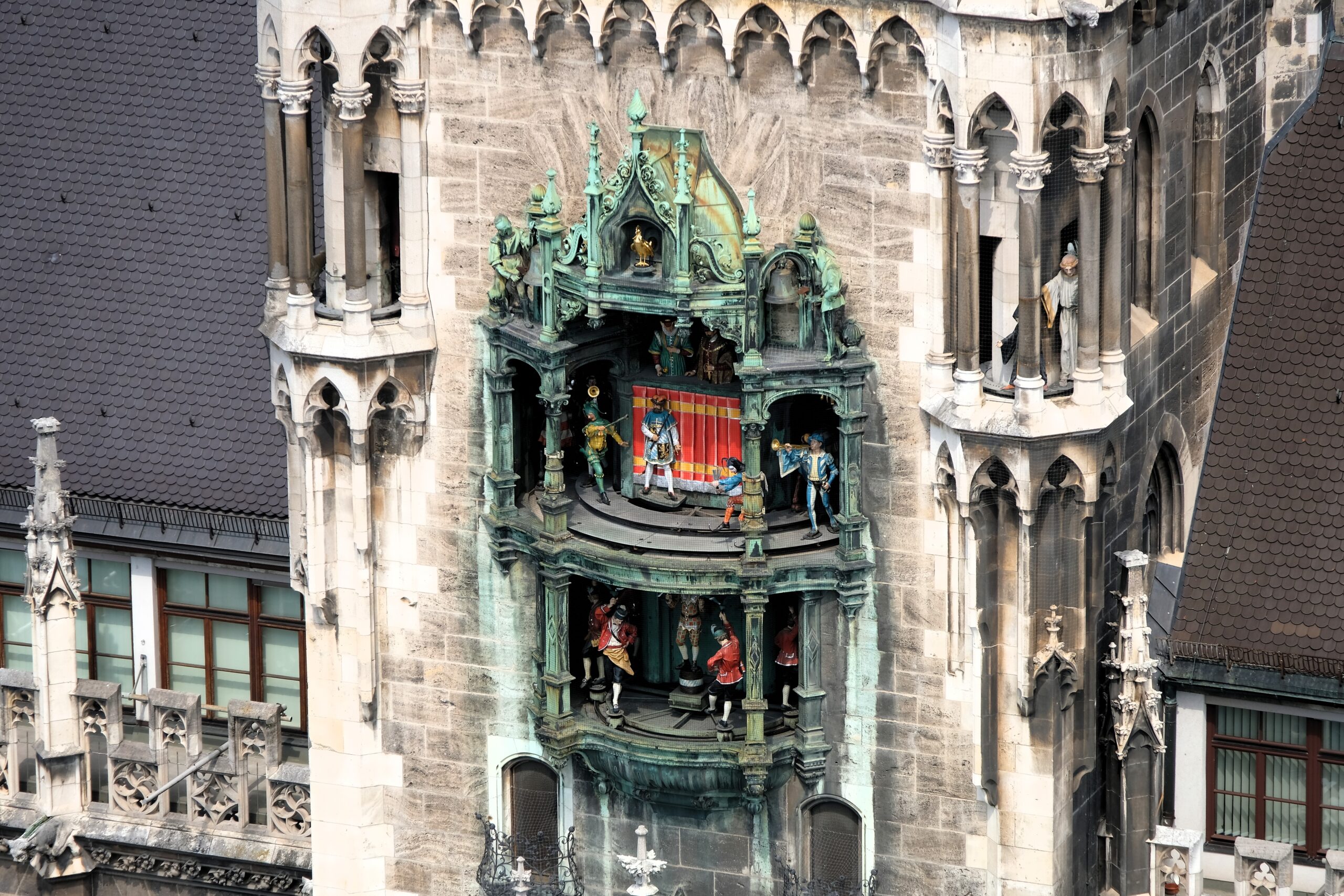
Altes Rathaus
Another of Marienplatz’s main attractions is Altes Rathaus. The Old City Hall until 1874. It dates back to 1310, with the Grand Hall be constructed between 1392-1394. The building was integrated into the old city’s fortification, its spire use to be part of the city’s Talburg Gate (Talburgtor). What is seen today is an iteration of may alterations, update and redecorating. Many of these changes happened between 1470-1480, then again in a more now-gothic style in 1861-1864. Extensively damaged during WWII, it was reconstructed in 1971-1974. As with many places in Munich, Altes Rathaus has a Nazi connection. It was the Grand Hall where on the 9th November 1938 that Joseph Goebbels did a speech which was the prelude for the Kristallnacht.
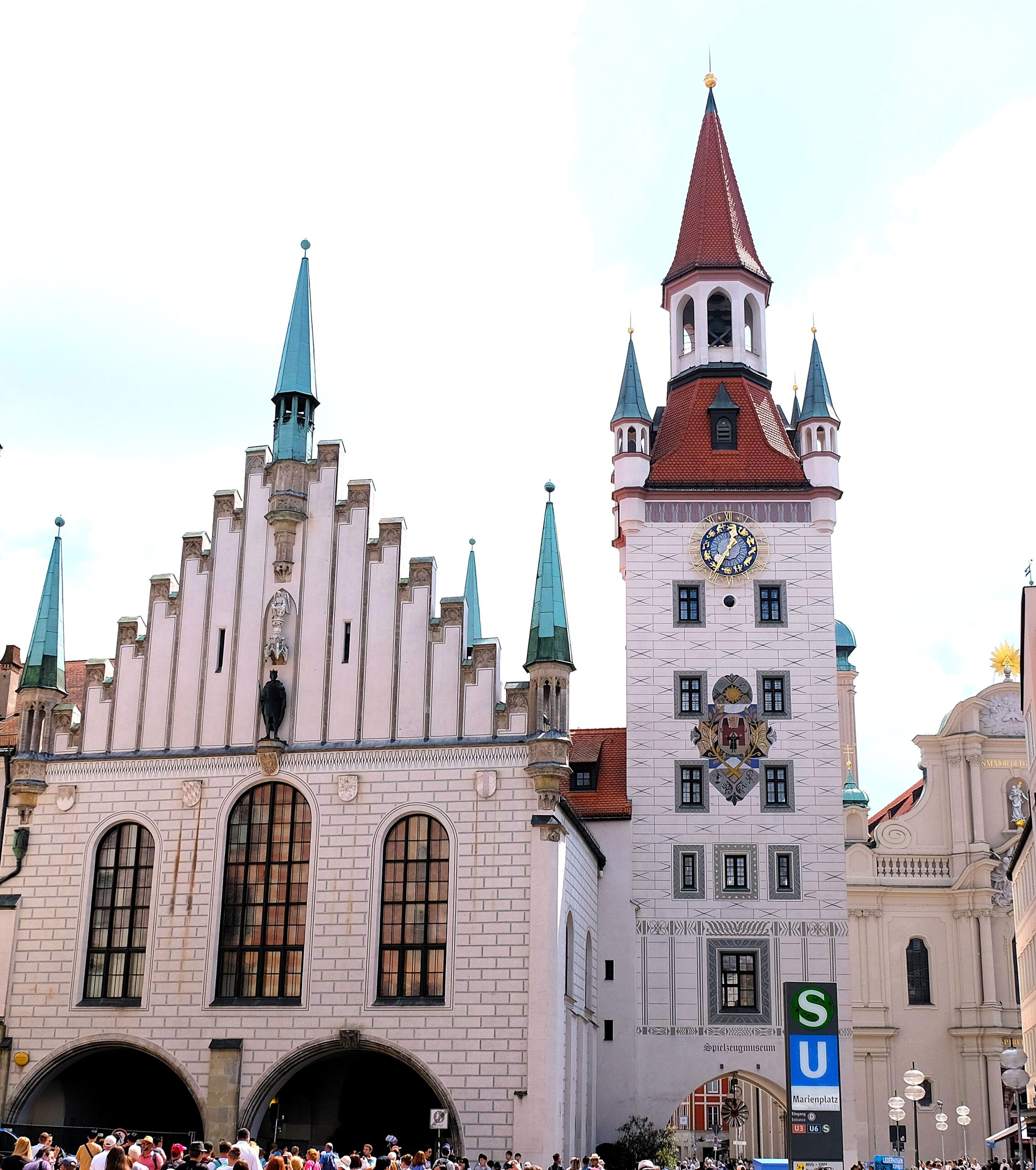
Asamkirche
Two brothers Egid Quirin Asam, a sculptor and Cosmos Damian Asam, a painter, bought 4 houses. The two outer houses were changed into their homes. For the middle-two, the brothers built their own private church. It was so beautiful that the public forced them to give the public access. Sound like a wives tale? It’s not. And yes, it is an absolutely beautiful and unique little church. I had not plans to visit it but was looking for an outdoor store. I found one, but it was closed. Being close-by I thought I’d visit. From the exterior it looks not much different from many other baroque stucco building. Inside is another story! For its size, décor, quality and uniqueness it has got to be in my top 5 churches.
Built between 1733-1746, the Asam brothers must have had considerable wealth and their talent is unquestionable. Each brother has a Wikipedia page but there isn’t much detail about them, only that they were prolific workers; mainly for Benedictine monasteries. Asamkirche is actually called St. Johann Nepomuk, though everyone calls it Asamkirche. Compared to other baroque churches this one is different; the client, decorator, architect, planner, builder is the same person i.e. the brothers. They were fully in control of everything. This was to be their own private chapel, their own sanctuary. These personal touches and motivation can be seen in nuances throughout. It is intimate, not because of its size, but because it was designed and built as an intimate project…and they succeeded 100%!
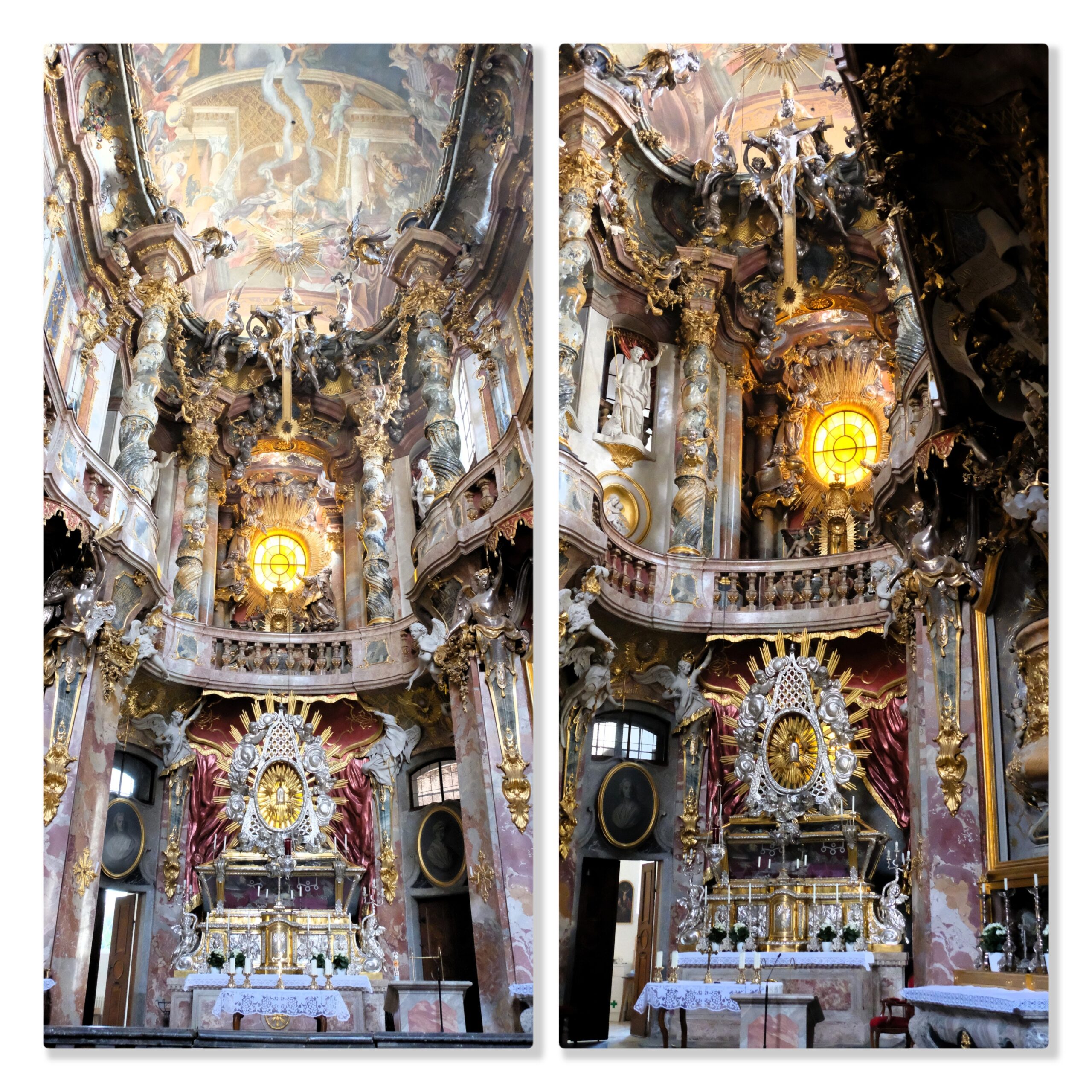
Anecdotal
It’s taken me ages to write about Munich; I’ve not been able to get into the groove of writing. Work hasn’t help…all consuming, energy draining and creatively sapping. I’ve not been able to get into a rhythm even when it comes picture editing. Munich, Marienplatz specifically, having so much in close proximity has compounded the process. If I wrote and posted all my pictures of Day 1, this post would need to be 10 pages…excluding the pictures! Solution, and for the sake of my sanity, I’ve split Day 1 into two parts. I hope Part 2 wont’ take me another few months to write!
